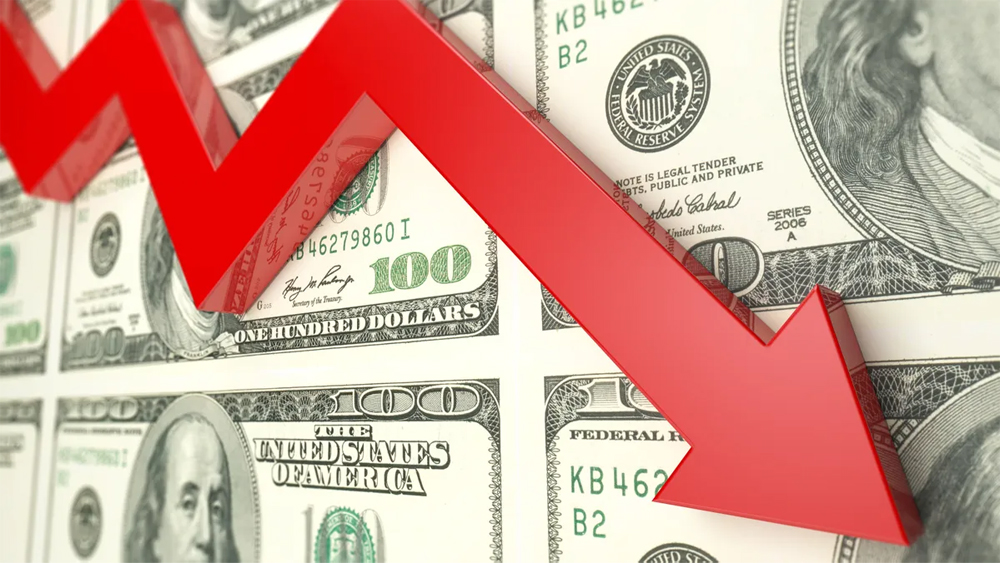
US assets have sold off after President Trump kicked off a renewed campaign attacking Fed Chair Powell before Easter and continuing that overnight. While price action was muted Thursday night, the market stepped up a gear from yesterday, after further digesting the implications of the Fed losing its independence. US equities have plunged, the US Treasuries curve is much steeper, and USD indices are probing fresh multi-year lows. The NZD broke above 0.60 yesterday and near the figure.
On Thursday night, market focus was on President Trump’s renewed attack on Fed Chair Powell, firstly on social media and then at a press conference, for not cutting rates but he stopped short of saying that he intended to fire him. "If I ask him to, he'll be out of there," Trump told reporters, "I don't think he's doing the job. He's too late, always too late. A little slow. And I'm not happy with him. I let him know it and if I want him out he'll be out of there real fast, believe me." While the display of anger got the market’s attention, the net impact on financial prices was small.
Nick Timiraos of the WSJ wrote “President Trump has for months privately discussed firing Federal Reserve Chair Jerome Powell, according to people familiar with the matter, but he hasn’t made a final decision about whether to try to oust him before his term ends next year.” He added, Powell made clear to the administration six years ago that he would fight his removal in court, and his public comments recently suggest his position hasn’t changed.
Market concern about Trump’s comments amped after a report that Hassett, director of the White House National Council, said the administration “continues to study” the status of Powell, implying that they were investigating the legality of firing him. Markets turned pear shaped when Asia opened yesterday and remained precarious overnight after Trump claimed there was virtually no inflation, “but there can be a SLOWING of the economy unless Mr. Too Late, a major loser, lowers interest rates, NOW”.
The trade war also overhangs the market. The first round of trade negotiations between the US and Japan, the first country in the queue, didn’t seem to go down well. PM Ishiba told Parliament yesterday that Japan won’t just keep conceding to US demands to reach a deal over tariffs and he launched a strong defence of barriers to agricultural imports. He added that the government has no plan to terminate a trade deal struck with the US in 2019, but will keep voicing “grave concern” over inconsistency between the deal and Trump’s latest auto tariffs.
China warned countries against striking deals with the US that could hurt its interests with the Ministry of Commerce added that Beijing “will never accept it and will resolutely take reciprocal countermeasures”.
Just before Easter, the Office of the US Trade Representative issued a notice outlining the policy for charging Chinese-owned or operated ships, a policy that was flagged last month. There will be no fee for the first 180 days, and then the fee will be based on net tonnage per US voyage, increasing incrementally over the following years. A shipbroking group estimated that China-made supertankers sailing under non-Chinese operators can expect to be hit with a surcharge of USD1.9m per US port visit under the new rules, rising to USD5.2m for Chinese-operated ships. The fees will up-end the freight market and add to inflation.
On a slightly more positive note, President Trump met with Italian PM Meloni before Easter and said that he expects to reach a trade deal with the EU, but indicated he is in no hurry to finalise an agreement to reduce tariffs. Trump indicated he still foresees a “baseline of a substantial number” of tariffs on imports.
Turning to the markets, with an hour of trading left the US S&P500 is down over 3%, following a small gain on Thursday. European markets showed modest movements, so this is a “Sell America” moment as investors lose confidence in the policy agenda and US economic outlook.
The US Treasuries curve is much steeper, with the 2-year rate down 6bps to 3.74% from the pre-Easter US close and the 10-year rate is up 7bps to 4.39%, the latter up 8bps from NZ’s Thursday close. The market now prices almost four full Fed rate cuts (96bps) by year end, reflecting rising risk of economic recession and the increased pressure on the Fed to cut rates. Yield curves typically steepen in the early onset of economic recession. Also, in the current situation, higher long-term rates reflect rising term premia, due to the United States’ increasing perception of becoming a Banana Republic.
These perceptions of the US as well as fund flows out of the country are contributing to a weaker USD. USD indices are probing multi-year lows. Since Thursday’s NZ close, key major currencies apart from CAD are up in the order of 1.2-1.6% against the USD.
The NZD blasted up through 0.60 yesterday and met some resistance just under 0.6020 and current sits near 0.60, meeting our year-end target eight months early. The USD remains significantly over-valued against long-term valuation metrics and if we’re early in a crisis of confidence, with Trump continuing to chip away at the bedrock of US institutions, then there is plenty more downside potential. Our long-standing 2026 year-end target of 0.66 also looks under threat of being achieved in the not-too-distant future.
NZD cross movements have been small, given a weaker USD is the main game in town. The AUD blasted up through 0.64 yesterday and NZD/AUD has nudged up to 0.9360. EUR, GBP and JPY have also broken through some big figures. NZD/EUR is steady around 0.52, NZD/GBP has pushed up to 0.4490 and NZD/JPY is flat around 84.4. With CAD closely tied to the USD, NZD/CAD is up over 1% to over 0.83.
In other pre-Easter news, which already feels dated given attention elsewhere, the ECB cut its Deposit Rate by 25bp for a sixth consecutive meeting, bringing it to 2.25% and removing the restrictive label from its policy statement. The concept of “neutral” policy was also dropped, with President Lagarde stressing that it’s not an appropriate concept currently with huge shocks. The market moved to price in a bit more easing through the rest of 2025, with 65bps priced through to December.
In US economic news, the Philly Fed's survey showed the general business outlook index falling to -26.4 in April, a much bigger decline than expected. The near 39pt drop in the index has only been exceeded twice since 2000, during the GFC and COVID19 recessions. Initial jobless claims fell 9k to 215k, still showing no obvious weakness in the labour market.
NZ Q1 CPI data were at the top end of market expectations, with inflation ticking higher to 2.5%. The seasonally adjusted data showed a second consecutive quarterly lift in inflation, and annualised inflation running over 3.2% over the past six months, with mildly softer non-tradeables inflation being more than offset by higher tradeables inflation. Market reaction was minimal, with bigger global forces front of mind. Expectations that the RBNZ can continue to cut rates remained in play, but the recent lift in inflation to the top end of the target range suggests the RBNZ will need to tread carefully.
In the domestic rates market on Thursday, it was another day of the NZGB curve flattening, with performance driven by the long end. The 10-year rate fell 5bps to 4.53%, taking the fall over the shortened week to 23bps, reversing over half of the previous week’s chunky lift in yield. There was strong demand at the weekly tender, particularly for the longer 2036 bond, attracting a bid-cover ratio of four times. In the swap market, the 2-year rate was flat at 3.13%, with inflation data not moving the market, while the 10-year rate fell 4bps to 4.04%.
The calendar in the shortened week ahead is light, with a lack of top-tier releases. In the day ahead will be NZ trade data and euro area consumer confidence. As has become the norm, however, focus will be on President Trump’s antics around the Fed and trade policy. A number of Fed speakers are on the calendar and they will have the chance to back up the view that the Fed must remain independent for the sake of the economy. Chicago Fed President Goolsbee, in a TV interview, has already delivered that message.

We welcome your comments below. If you are not already registered, please register to comment.
Remember we welcome robust, respectful and insightful debate. We don't welcome abusive or defamatory comments and will de-register those repeatedly making such comments. Our current comment policy is here.